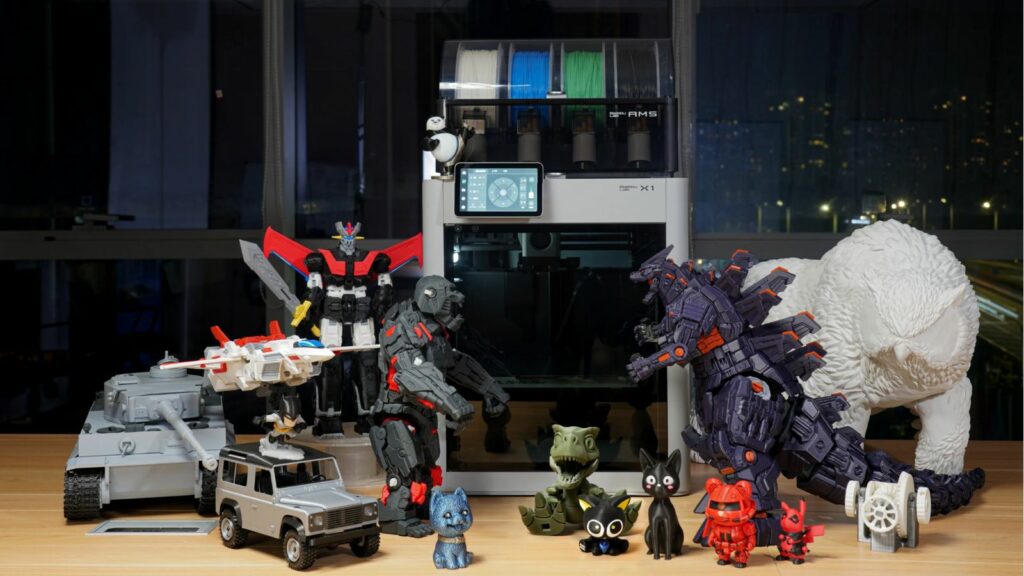In the ever-evolving landscape of technology, 3D printing has emerged as a revolutionary force, transforming the way we manufacture and create. However, like any groundbreaking technology, it comes with its set of challenges. In this blog post, we’ll delve into the common questions that arise for someone who wants to start their 3D printing journey, and how the Bambu Lab X1 Carbon 3D Printer can address these issues with its cutting-edge features.

Print Quality and Precision Issues
One of the primary challenges in 3D printing is achieving consistent print quality and precision. Uneven layers, rough surfaces, and distorted prints can hinder the realization of intricate designs.
The Bambu Lab X1 Carbon boasts an advanced precision printing system, ensuring layer-by-layer accuracy and a smooth finish. It utilizes two sets of independent sensors and an algorithm to measure the height of the nozzle relative to the bed. The lidar and analog force sensors crosscheck for an extra layer of redundancy in bed leveling. With its high-resolution capabilities, this 3D printer excels in producing detailed and flawless prints.
This revolutionary 3D printer also features Active Vibration Compensation, Precise Layer Height, and High Bandwidth Flow Control to ensure a smooth print each time.
Print Speed and Efficiency Concerns
Slow printing speeds can be a major drawback, especially when dealing with large or complex designs. Efficiency becomes crucial, especially for businesses relying on 3D printing for rapid prototyping or production.
Bambu Lab X1 Carbon stands out with its impressive print speed, thanks to its ultra lightweight carbon rail, 40 watt ceramic heater, powerful 12 watt cooling fan and welded steel XY chassis. This 3D printer ensures swift and efficient production without compromising on print quality, making it an ideal solution for time-sensitive projects.
Material Compatibility Challenges
Not all 3D printers support a wide range of materials, limiting the diversity of creations. Material compatibility issues can lead to failed prints and restrict the potential applications of 3D printing technology. Most 3D printers are only capable of printing one colour at a time.
The Bambu Lab X1 Carbon supports a variety of materials, not only the common PLA and PETG materials. It can also print PA-CF, PA, PC and multiple Polymers due to its sophisticated thermal control, hardened steel nozzle and auxilary part cooling fan.
With its Automatic Material System (AMS), the Bambu Lab X1 Carbon is capable of printing multiple colours and materials in a single prototype. This versatility allows users to explore a broader spectrum of possibilities, from functional prototypes to aesthetically pleasing designs.
Complex Setup and Calibration
Many users struggle with the complex setup and calibration processes of 3D printers, leading to frustration and wasted time.
The Bambu Lab X1 Carbon simplifies the user experience with its user-friendly Bambu Studio and Bambu Handy programs that operate on the go. It also has a straightforward setup out of the box, as it is tuned, calibrated and tested before you receive it. Its auto-bed leveling feature ensures hassle-free calibration, reducing the learning curve for beginners and streamlining the printing process for experts.
Limited Build Volume
Small build volumes can be restrictive, preventing the creation of larger and more ambitious projects.
Solution: The Bambu Lab X1 Carbon offers a generous build volume, providing ample space for ambitious creations. Whether you’re working on large prototypes or intricate designs, this 3D printer empowers you to bring your ideas to life on a grand scale.
And The Verdict Is…
While 3D printing presents its own set of challenges, the Bambu Lab X1 Carbon 3D Printer emerges as a solution-driven powerhouse, addressing common issues with its precision, speed, material compatibility, user-friendly setup, and expansive build volume. By investing in this cutting-edge technology, users can overcome the hurdles of 3D printing and unlock the full potential of their creativity and innovation.
